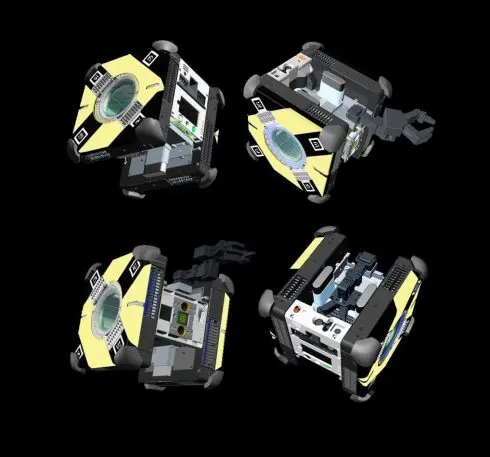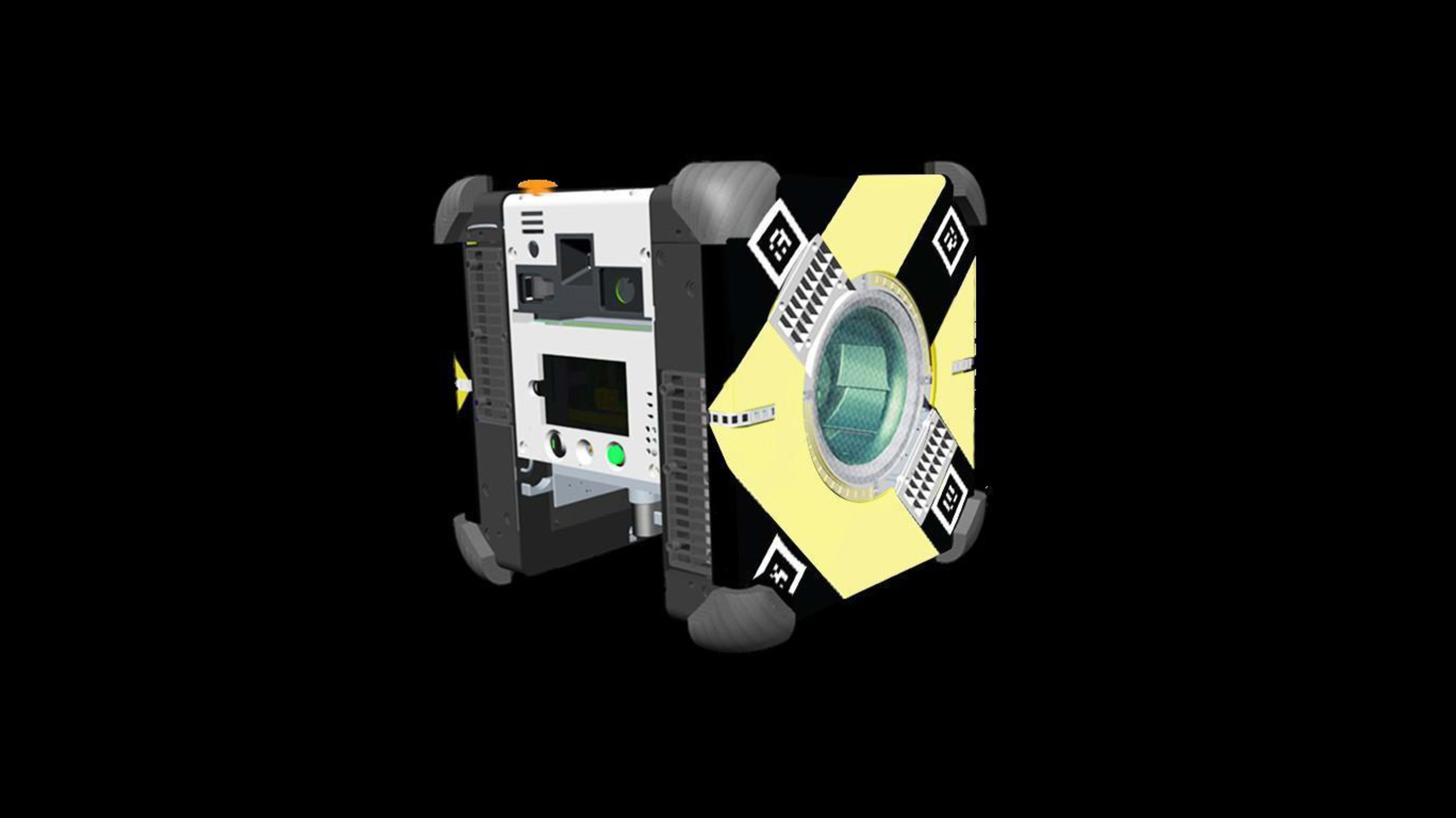May the force be with them!
Astronauts aboard the International Space Station will soon be joined by a crew of free-flying mini-robots inspired by the Jedi training droids that Luke Skywalker practiced his light saber skills with in Star Wars.
NASA’s one-foot-cube Astrobees will be packed with cameras, sensors, and other tools and travel around the space station; its tasks will be far more mundane, however, than the movie training droids. The bots will help with tasks like measuring noise levels, testing carbon dioxide concentrations, or shooting video of astronauts at work.
Ground crews will be able to remotely control the robot, sending it to various station waypoints, or even giving it a set of tasks to carry out largely autonomously, says Trey Smith, a research scientist in NASA’s Intelligent Robotics Group.
“In the end, it should be able to depart from its dock, do an entire survey of several modules, and then return to its dock at the end of it,” he says.

The robot is propelled by air–via a fan-based system and set of nozzles to control its direction. Visual landmarks around the space station will help it find its way.
Sometime in the coming year, the trio of Astrobees will replace an earlier model of onboard robots called SPHERES (Synchronized Position Hold Engage and Reorient Experimental Satellite), which have been in use since 2006. In addition to being more self-reliant and better at navigation–the SPHERES bots require constant ground crew control. Astrobees also feature rechargeable batteries, while SPHERES bots use disposable alkaline battery packs to power themselves and carbon dioxide tanks to push themselves about.
The Astrobee robots are considered a research platform, and earthbound scientists will be able to use them to experiment with everything from novel interfaces to experimental propulsion technology. NASA is expecting to increase the use of autonomous robots in the coming years and decades.
The Astrobee, which includes navigation algorithms like those used by drones, has already been tested extensively on Earth. That includes tests in a two-dimensional setting where it floats above a smooth granite surface–Smith compares it to an air hockey table where the puck, not the table, emits air–and on a platform it can ride about in three dimensions.
One of the most important challenges, Smith says, was making sure the robot can’t accidentally break a window onboard the space station. Partly for that reason, all eight of its corners are covered in foam bumpers.
“Our strategy for not damaging things is to be light, and slow, and soft,” he says.
Future bots may play even more of a role in missions to the moon or Mars, freeing up more astronaut time for scientific research and other endeavors only human crews can do. And greater autonomy will be more crucial farther away from Earth, where communications delays will make direct control more of a challenge.
Recognize your brand’s excellence by applying to this year’s Brands That Matter Awards before the early-rate deadline, May 3.
